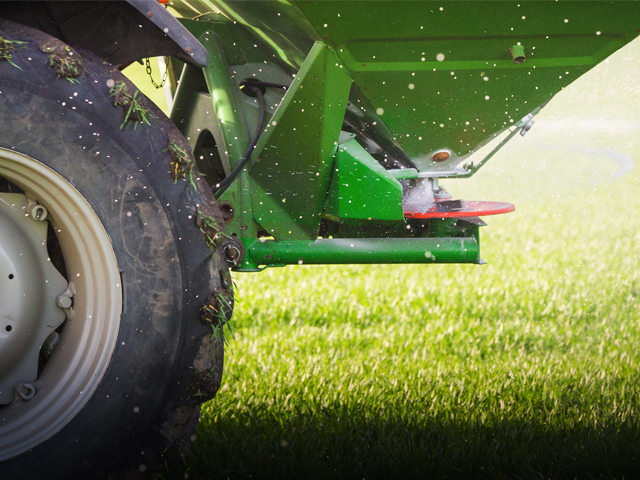By Dave Heegard
It was January of 1975 and the Minnesota Vikings were about to follow up their loss in Super Bowl VIII to the Miami Dolphins with a loss in Super Bowl IX to the Pittsburgh Steelers. And the turf world was about to learn of a new fertilizer, a high analysis “non-burning” fertilizer. Not possible thought many—high analysis fertilizers burn. The prevailing thought was, “I’m using something slow and safe and about 6% N; I’m not burning my grass.”
My fertilizer career had just started, and I didn’t think it was possible that the Vikings could lose back to back Super Bowls, but I was sure that a high analysis, non-burning fertilizer was possible. In fact, it was my product to sell. One hundred percent slow release, chemically, physically, homogeneous high-density fertilizer. No filler. No limestone. No carrier, just nutrients. We were using urea to formaldehyde mole ratios that produced ideal nitrogen release characteristics, not too slow, not too fast; we had a non-burning high analysis fertilizer.
Back in those days, we could even call it, safe.
Golf courses then had real fairways, 40 acres of fairway was average—not these 16-acre landing zones of today. At two bags per acre, 80 them could treat a whole golf course. That was so much easier than the 400 bags needed previously. There was less shipping, less unloading, less storing, less spreading, less bag disposal. The high analysis, non-burning feature of fertilizer changed the game (no pun intended).
Soon, new technologies emerged, new reacted offerings, new coated offerings, sulfur-coated, polymer-coated, polymer-sulfur-coated . . . but high analysis and safe were always at centerpiece of the offering. Sales conversations focused around cost per acre, or cost per feeding day. These new high analysis fertilizers made the cost per bag irrelevant. How much did it cost me to feed my turf, was the relevant question.
For what seems like 35 years, “How much does it cost to feed my turf?” is pretty much where the conversations remained. To be sure there was vigorous debate about different nitrogen release characteristics necessitated by maintenance demands, labor costs, and budgets. Through it all however, the fertilizer analysis remained high, and an important consideration. Cost per bag was still irrelevant; it was about the cost to feed my turf.
Ch-Ch-Ch Changes
It was all about to change. It was 2009 and the Steelers had just finished winning Super Bowl XLIII (some things don’t change) and the price for urea, the main nitrogen component in most fertilizers, had gone sky high. Record, unimaginably high pricing worldwide. There was much speculation about why. Was it simply a farmer supply/demand issue fueled by the changing diets of the global population? Was it pricing manipulation by a few basic manufacturers? Was it a fuel cost-related production issue? Or was it just a legitimate shortage? Arguments and finger pointing ensued.
Regardless, the turf industry was an innocent by-stander in the fall out from this pricing anomaly. Turf fertilizer prices went through the roof, like nothing our industry had ever seen. Pricing on bags of fertilizer got so high that the conversation did change. It was no longer about cost to feed my turf, it was about, “That bag of fertilizer is way too expensive!”
I was there, I saw it happen. So how do you lower the cost of a bag of fertilizer? Filler! You take a bag of 100% slow release, chemically, physically, homogeneous high-density fertilizer and add in limestone (or biosolids, or etc.). You take a bag of 30% N fertilizer, mix in a pile of limestone, and kick out two bags of a 15% N fertilizer. Good deal. “The price of that bag looks much better!”
Unfortunately, not much was accomplished. You now need to use twice as many bags. You need to ship twice as many bags. You need to store twice as many bags, you need to dispose of twice as many bags. We lowered the price per bag, but raised the cost to feed your turf.
Carl Eller days
We’re back to where we started. Back to the days of Fran Tarkenton and Bud Grant. But we don’t need to be. The price of urea came down years ago, but the price expectations of a bag of fertilizer did not. The demand for watered down, diluted, cheap fertilizer still exists. The problem is, watered down and diluted is accurate, but these fertilizers are not cheap, and cost more to use in every way. I can’t help but think our industry has failed to keep pace.
It was 55 years between the Wright brothers’ putting their plane in the air at Kitty Hawk, NC and the Boeing Company introducing the 707. What an advancement in technology! In 45 years we’ve “advanced” the fertilizer industry from 100% slow release, chemically, physically, homogeneous high-density fertilizer to the inefficient, diluted, watered down expensive offerings of today. We’ve gone backward at best.
As a salesman, I’m frustrated. I’ve failed to tell this story clearly enough and accurately enough. It’s on me, and in the remaining years of my career I’m going to try and turn that around. There is no reason for the industry not to being using pure fertilizer.
Dave Heegard is vice president of professional sales & marketing for Lebanon Seaboard Corporation, Lebanon, PA.


